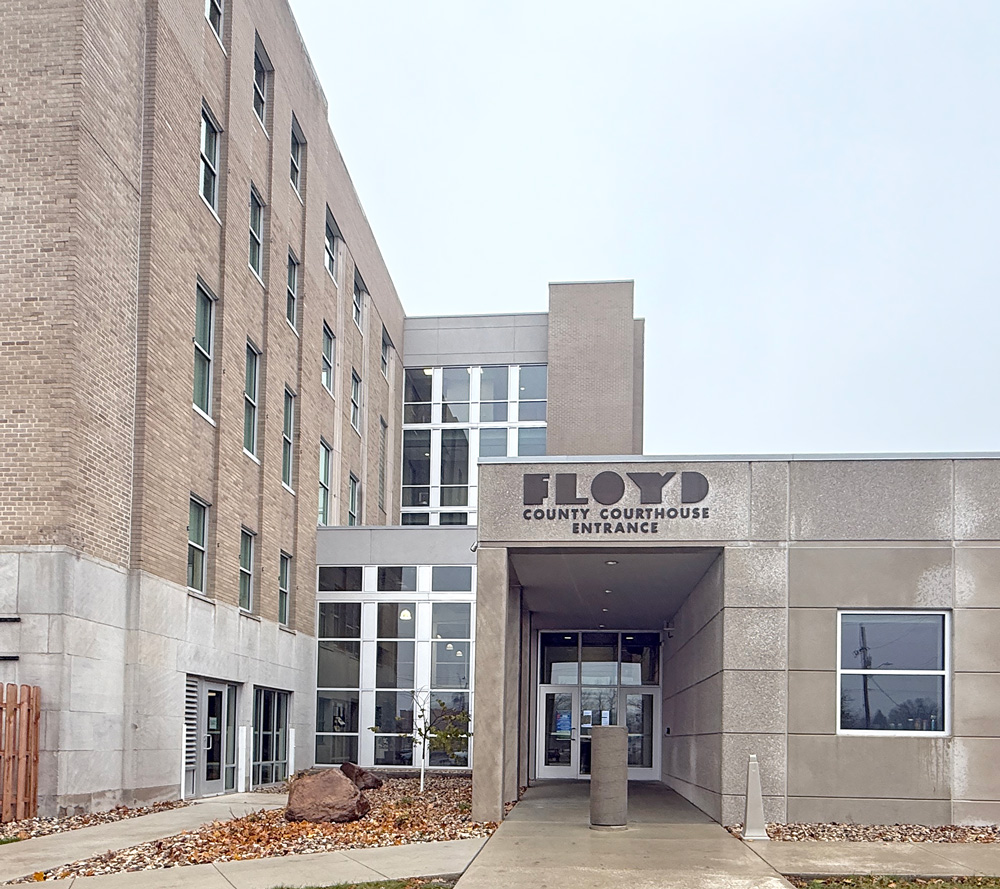Haglund helps draft suicide protocol bill for school districts
By James Grob, jgrob@charlescitypress.com
When Jenna Haglund began her job as a social worker for the Charles City and Waverly-Shell Rock school districts at the start of the school year, she quickly discovered there was no protocol in place at either school to help students who were expressing suicidal thoughts.
“We were missing the boat,” Haglund said. “I’m more than happy to build the boat.”
Haglund said she was finding examples where counselors or social workers were not being notified for several days when a student had openly expressed suicidal ideation.
There was no specific tool in place for a teacher or a staff member at a school if a student came forward and made statements about harming themselves. Teachers simply didn’t know the best way to handle the situation. Haglund called it a “blind spot.”
“We are now working on it for the school district, but it’s a statewide problem,” she said. “Suicide is ground-zero crisis of mental health.”
Haglund contacted her old friend, Todd Prichard, who happens to also be her state representative and the Iowa House minority leader, and together they drafted a bill that sets requirements across the state for schools to have a standard protocol when there is a child who has a suicide ideation or has attempted suicide. The bill requires that there be a formal reaction from the school.
“This was something that she saw as lacking,” Prichard said. “It was her idea and I’m going to run with it.”
Prichard filed the bill Thursday morning and said it would likely be introduced in the Iowa House next week, meaning it will be read in and assigned to a committee.
“The task now is to generate support and move it through,” Prichard said.
Haglund said she was “very excited” to see the bill reach the floor.
“I think it’s a positive move forward,” she said. “I wish this process would’ve started sooner, but I think we’re at a point where we’re open-minded enough about mental health that this can happen.”
Prichard said the bill would set a statewide standard, and establish at least a minimum requirement as to what a district should have in place.
“There is nothing required at the state level,” Prichard said. “Some schools probably have some good protocols and some probably have nothing.”
Prichard said the bill isn’t complicated, and he expects to get support for it. He said it might be something that can be brought into a larger juvenile health bill, or perhaps even a larger education bill.
“It’s one of those things where we need to make sure the issue is thought about, addressed, and dealt with deliberately, as opposed to haphazardly, because that’s when you have problems,” Prichard said. “It’s a no-brainer — 14 percent of children have an ideation or actual attempt at suicide.”
Haglund’s job is shared by the Charles City and Waverly-Shell Rock school districts. Each district pays half her salary, and she is the first social worker employed by either district.
She received her master’s degree in social work in 1999, and worked in crisis intervention jobs all over the country before moving to Charles City in 2005. She worked for a professor at Wartburg, and spent 10 years as an investigator for the Department of Human Services in Charles City.
She and her husband have two children, both currently enrolled at Charles City. She currently works in the psychiatric ward at Mercy One as well as for the schools.
As a school social worker, Haglund works directly one-on-one with students. A guidance counselor might identify a student with issues, and then Haglund will meet with that student and determine whether she needs to do a home visit.
She helps determine if the district needs to go more in-depth with services, and discovers if a student needs help with such things as daily nutrition or hospital or mental health care.
“I’m kind of the liaison between what is happening at school and what the needs of the family and community are,” she said. “I’m constantly looking at how everything fits together so the student can be successful in school.”
Haglund said that the suicide protocol would provide a universal format that’s fairly user-friendly for school districts. It would list a series of questions to ask a potentially suicidal student, and would list a series of actions to take. She said the questions are very direct.
We’re not planting the seeds by asking the questions,” Haglund said. “If you are suicidal or have thoughts of suicide, that seed has already been planted. All we’re doing is trying to make sure that you’re safe, and if there’s something more to do, we’re willing to do that.”
Based on the outcome of the questions, action can be taken. Parents can be called or students can be taken to the hospital or receive mental health care.
Haglund said that the district will make sure that either a parent or caretaker is made aware of what is happening. If it is determined that a student has an active suicide plan, the district will see if a parent or guardian can get them to a hospital, or determine that the school district gets the student to the hospital.
“If a teacher or assistant is not comfortable asking those questions, we encourage a school district to create a crisis team,” Haglund said. “If a student is identified to be making statements, a crisis team member is identified. No one leaves that student’s side until a crisis team member can ask the student those questions.”
The protocol also allows for the student’s re-entry back into the school — the mental health person can sit down with the student and find out how the student is coping.
“The bill is not only addressing the suicide prevention protocols, but also the school re-entry protocols,” Haglund said.
Haglund said it can be difficult sometimes for parents and teachers to distinguish between what’s depression and what’s normal teenage behavior. She said some of the warning signs include sadness and isolation. She said it’s natural for a teenager to sometimes want to isolate themselves more from their parents.
“If they refuse to engage, however, if they refuse to participate and are adamant about it, those are signs of depression,” Haglund said.
She said parents should be mindful of substance abuse, and also be mindful of some common teenage distractions. She said that teenagers getting heavily into their phones or into video games are normal teenage behaviors, but it could be a problem if they get obsessed about them.
“If they get overly emotional about it if you take those things away — anxious, upset, angry — then there could be something else behind that, and it’s something parents need to be conscientious about,” she said.
She said the best thing a parent can do is keep lines of communication open with their children.
“Know your kid. If you see signs that they’re changing, or something is off or different, sit down and have a conversation,” Haglund said. “Most kids will respond to that at some level. Most kids just want to be heard.”
Haglund said that although it’s been a long time coming, she is happy that the current trend is for people to more openly address mental health issues.
“Mental health is part of our culture and part of our reality, just as much as heart disease and diabetes and cancer,” Haglund said. “Let’s have those conversations about how we are meeting those needs in a positive way.”











Social Share